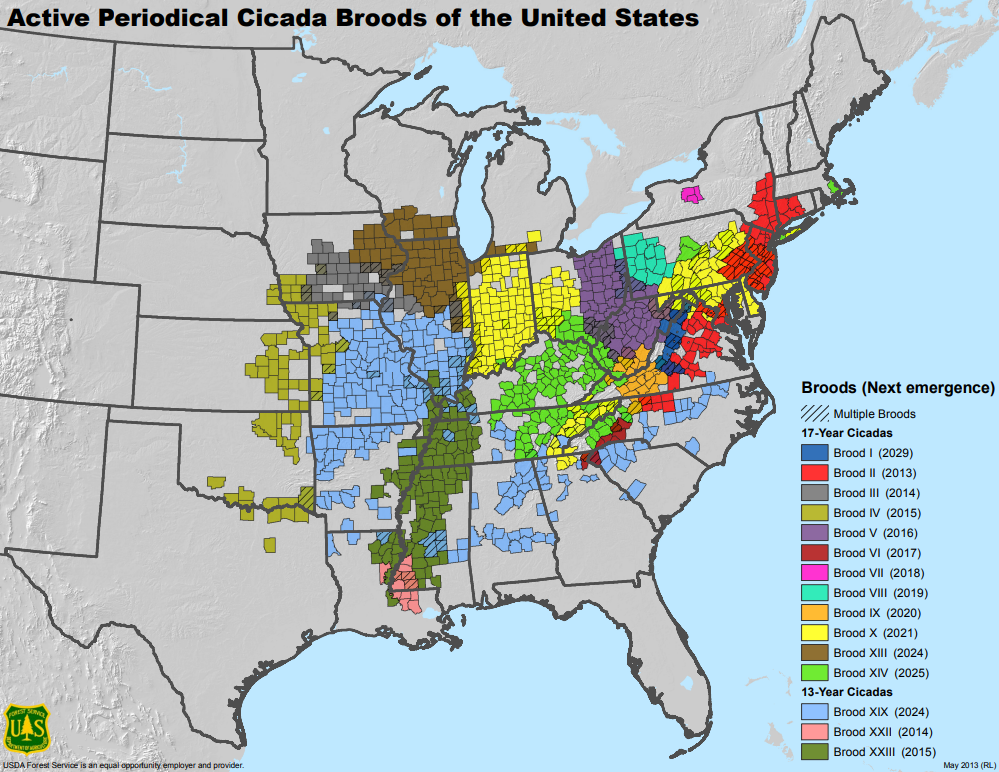Parts of Wisconsin brace for noisy, rare cicadas -- who's most impacted?
MADISON, Wis. (CBS 58) -- Some Wisconsinites will soon have to brace for a much louder summer thanks to cicadas.
Around mid-May, cicada noise will be in full swing in parts of southern Wisconsin. While the high-pitch buzzing occurs every year throughout the Midwest, experts say this year will be unique due to a rare emergence of cicadas that haven't been seen together since the 1800's.
PJ Liesch, an extension entomologist at the University of Wisconsin-Madison, compared it to the recent solar eclipse because "you only have so many opportunities in your life to witness something like it."
"This year we are talking billions, if not, trillions of cicadas," Liesch said.
Periodical cicadas, that only emerge every 13 or 17 years, will appear together for the first time since 1803, according to research by the University of Connecticut. It's still unclear to scientists why periodical cicadas don't resurface more often.
They're known as broods and more than a dozen states will experience Brood XIX and Brood XIII at the same time, which Liesch says will create a much louder and at times annoying noise.
"The noise is going to be very noticeable," Liesch said. "If we have a trove of trees behind us with singing male cicadas, that might be in the range of 70 to 80 decibels which could be similar to a vacuum cleaner. If you are really close, it can range 90 to 100 decibels which is really, really loud. That might interfere with some outdoor events."
Pros, Cons
While the noise can be disruptive, cicadas are mostly beneficial. Some environmental benefits include providing a valuable food source for birds and other predators, as well as improving water filtration in the ground.
"When they emerge from the ground, they create these exit holes that they crawl out of and to a certain extent it's going to have very similar impacts if you paid to have your lawn aerator by a lawn service," said Liesch.
They can also cause harm to young trees, but protective measures like covering the plants until the cicadas die can help.
Who's most impacted?
Most Wisconsinites will not be impacted, Liesch said. That's because cicadas will be most noticeable near the Wisconsin River and places like Lake Geneva, Beloit, and Janesville and considered to be the hot spots.
Sometimes referred to as the Great Southern Brood, Brood XIX, will be seen across Alabama, Arkansas, Georgia, Illinois, Kentucky, Louisiana, Mississippi, Missouri, North Caroline, Oklahoma, South Carolina, Tennessee and Virginia.
The 17-year periodical cicadas, known as Brood XIII, will be less widespread and emerge only in Indiana, Illinois, Iowa, and Wisconsin.
The next co-emergence of these broods won't happen for another 221 years, Liesch said.
For more historical information about cicadas in Wisconsin, click here.
Timeline
Cicadas don't come to the surface until soil temperatures are at a depth of 7-8 inches and about 64 degrees Fahrenheit.
The periodical broods are expected to emerge in mid-May and stop in late June. Due to a warmer spring, Liesch said millions could come sooner.















